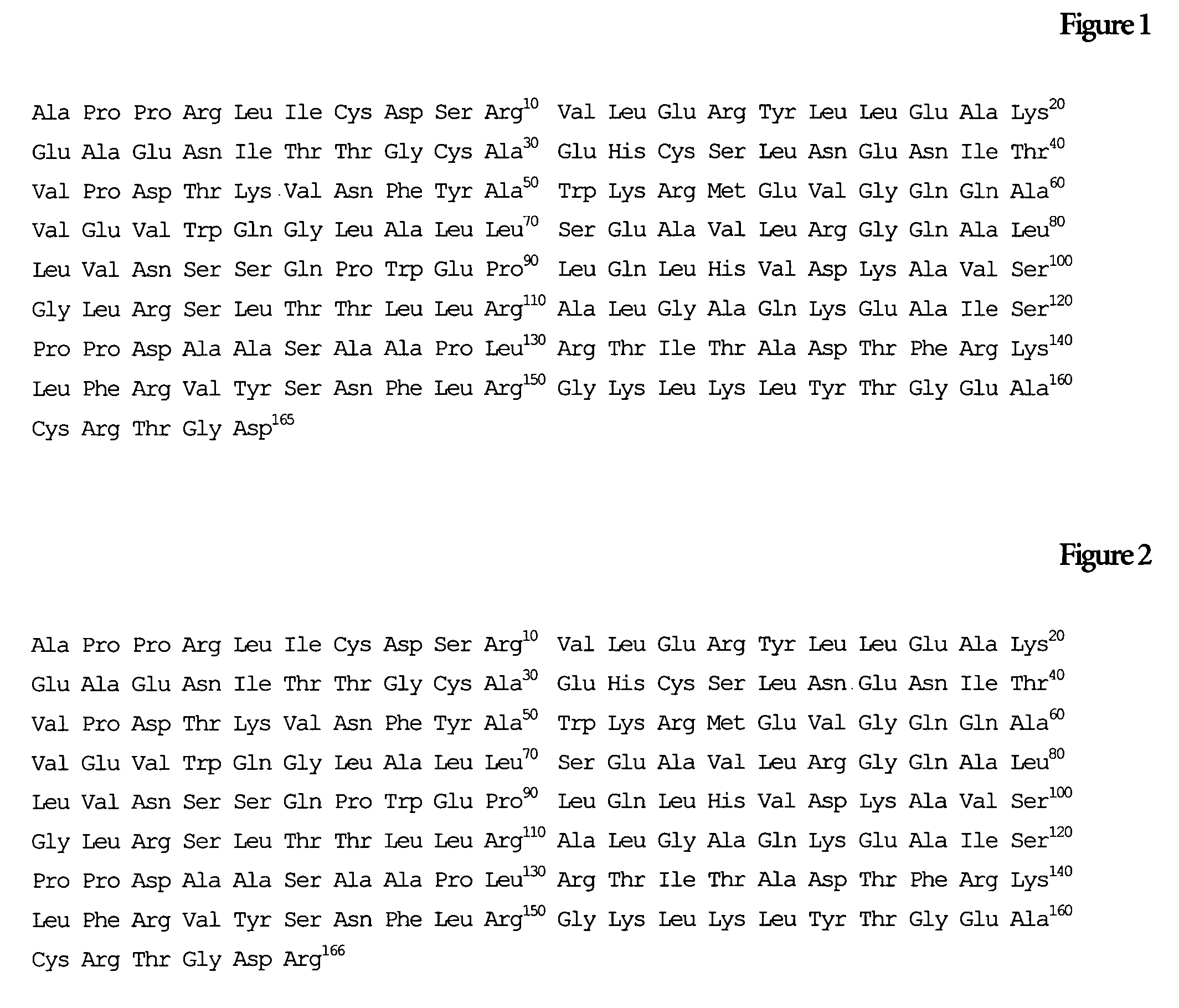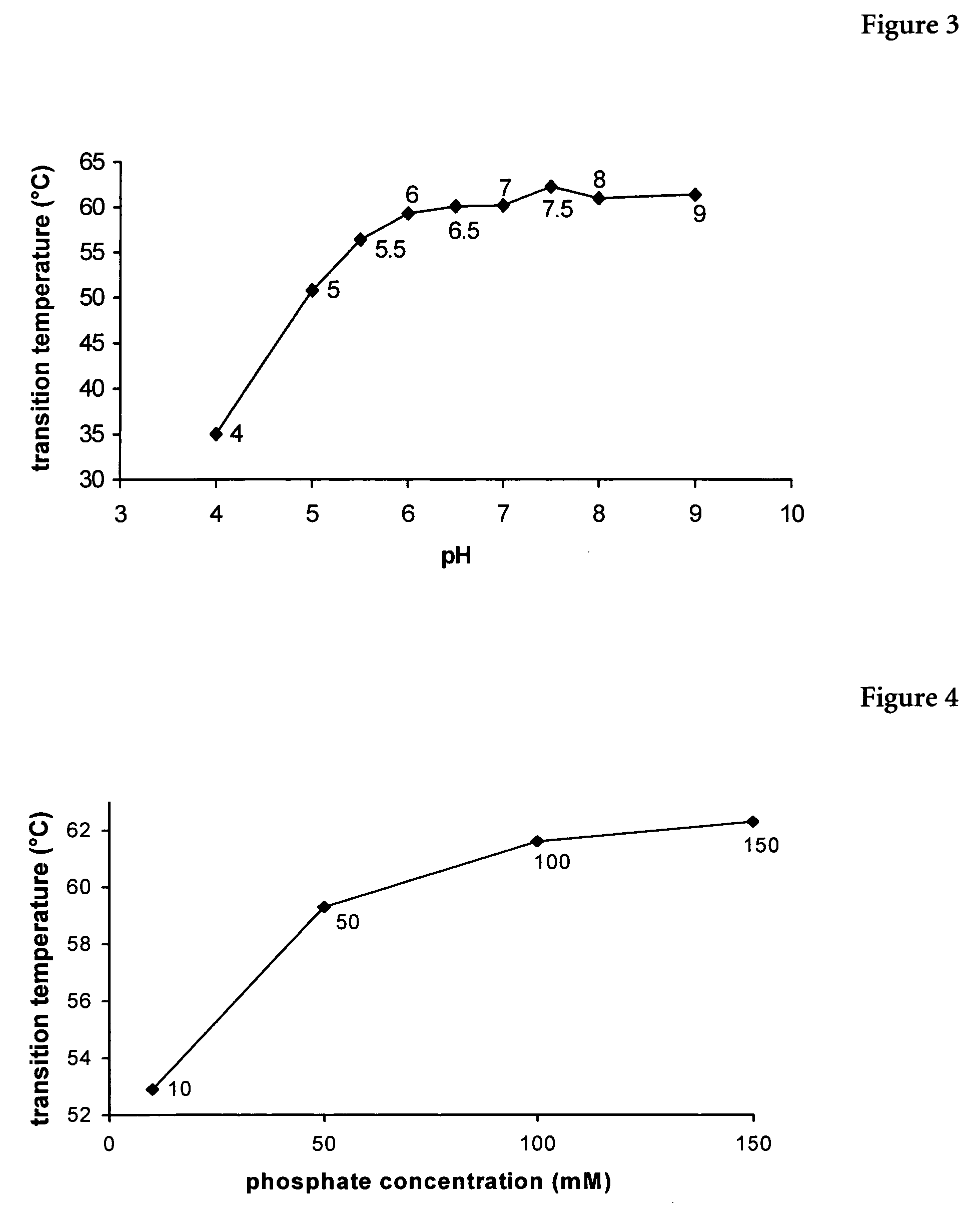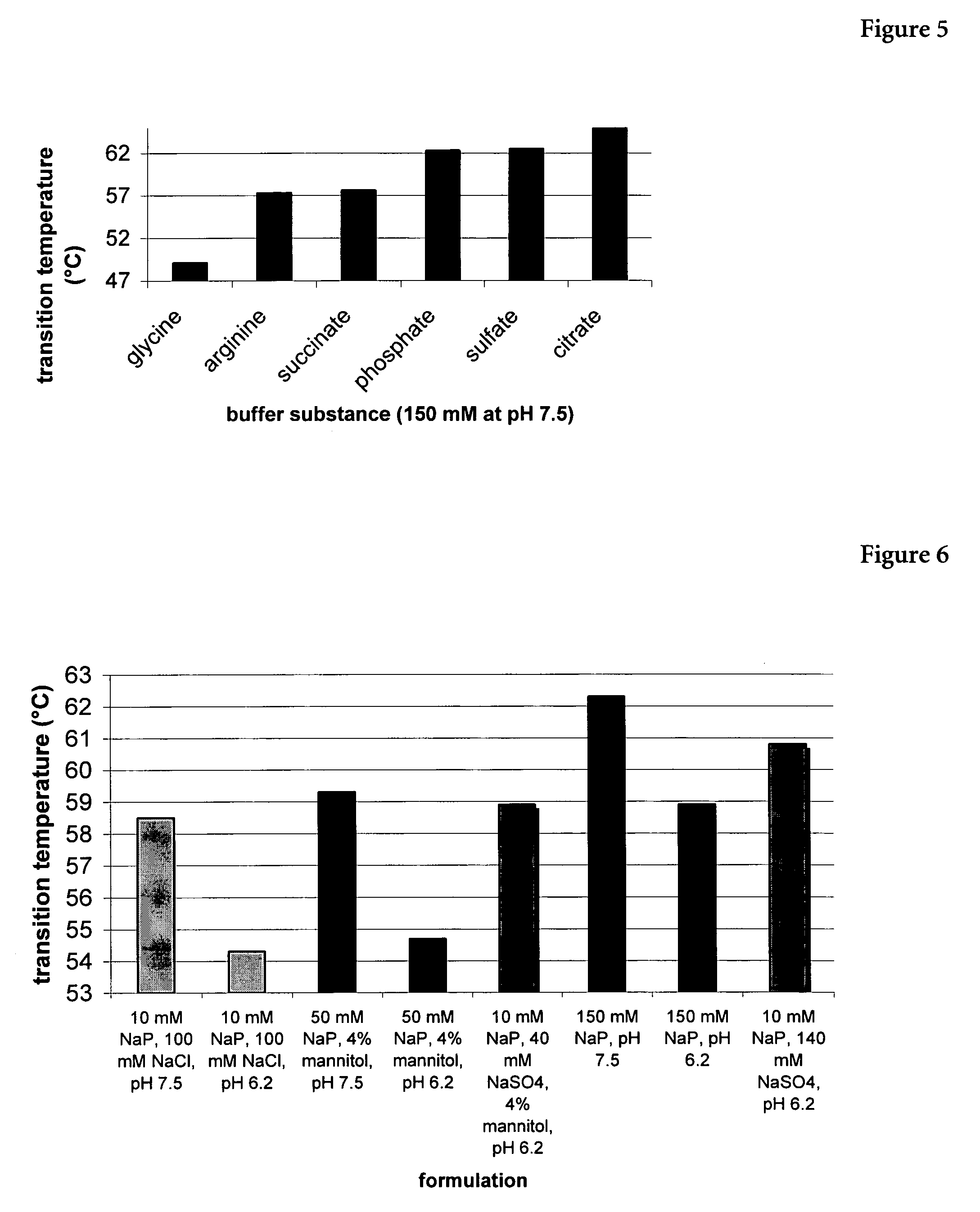Erythropoietin composition
a technology of erythropoietin and composition, which is applied in the field of erythropoietin composition, can solve the problems of inability to re-inject lyophilisates into humans, the risk of incorrect handling of pharmaceutical products, and the risk of viral infections caused by contaminants in albumin preparations, so as to increase the production of reticulocytes
- Summary
- Abstract
- Description
- Claims
- Application Information
AI Technical Summary
Benefits of technology
Problems solved by technology
Method used
Image
Examples
example 1
Fermentation and Purification of Human EPO
a) Inoculum Preparation and Fermentation
[0135]One vial of the Working Cell Bank, originating from an EPO-producing CHO cell line (ATCC CRL8695, disclosed in EP 411 678 (Genetics Institute) can be used) is taken from the gas phase of the liquid nitrogen storage tank. The cells are transferred into glass spinner flasks and cultivated in a hydrogen carbonate-buffered medium in a humidified CO2 incubator. Typical serum free media used for the inocolum preparation and fermentation are disclosed in European Patent Application 513 738, to Koch published 12 Jun. 1992, or WO 96 / 35718, to Burg published 14 Nov. 1996, for example contain as medium DMEM / F12 (e.g. JRH Biosciences / Hazleton Biologics, Denver, U.S., order No. 57-736) and additionally sodium hydrogencarbonate, L+glutamine, D+glucose, recombinant insulin, sodium selenite, diaminobutane, hydrocortisone, iron(II) sulfate, asparagine, aspartic acid, serine and a stabilizer for mammalian cells su...
example 2
Pegylation of EPO with mPEG-SBA
[0156]EPO purified in accordance with the serum free procedure of Example 1 (EPOsf) was homogeneous as determined by analytical methods and showed the typical isoform pattern consisting of 8 isoforms. It had a specific biological activity of 190,000 IU / mg as determined by the normocythaemic mouse assay. The pegylation reagent used was a methoxy-PEG-SBA, which is a compound of Formula II in which R is methyl; x is 3; and m is from 650 to 750 (avg. about 680, corresponding to an average molecular weight of about 30 kDa).
Pegylation Reaction
[0157]To one hundred milligrams of EPOsf (9.71 ml of a 10.3 mg / ml EPOsf stock, 5.48 μmol) 10 ml of 0.1 M potassium phosphate buffer, pH, 7.5 containing 506 mg of 30 kDa methoxy-PEG-SBA (16.5 μmol) (obtained from Shearwater Polymers, Inc., Huntsville, Ala.) was added and mixed for 2 h at room temperature (20–23° C.). The final protein concentration was 5 mg / ml and the protein:PEG reagent ratio was 1:3. After two hours, t...
example 3
Pegylation of EPO with mPEG-SPA
[0164]A different aliquot of the EPOsf used in Example 2 was reacted with 30 kDa methoxy-PEG-SPA (Shearwater Polymers, Inc., Huntsville, Ala.). Reaction was performed at a protein:reagent ratio of 1:2 and purification techniques were in accordance with Example 2. Primarily the mono-pegylated species was produced.
PUM
| Property | Measurement | Unit |
|---|---|---|
| average molecular weight | aaaaa | aaaaa |
| molecular weight | aaaaa | aaaaa |
| molecular weight | aaaaa | aaaaa |
Abstract
Description
Claims
Application Information
 Login to View More
Login to View More - R&D
- Intellectual Property
- Life Sciences
- Materials
- Tech Scout
- Unparalleled Data Quality
- Higher Quality Content
- 60% Fewer Hallucinations
Browse by: Latest US Patents, China's latest patents, Technical Efficacy Thesaurus, Application Domain, Technology Topic, Popular Technical Reports.
© 2025 PatSnap. All rights reserved.Legal|Privacy policy|Modern Slavery Act Transparency Statement|Sitemap|About US| Contact US: help@patsnap.com



